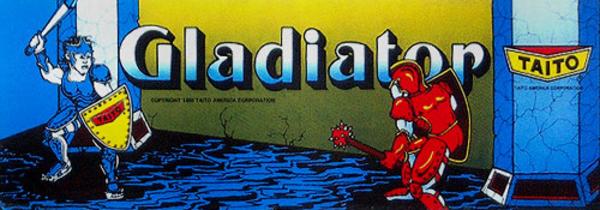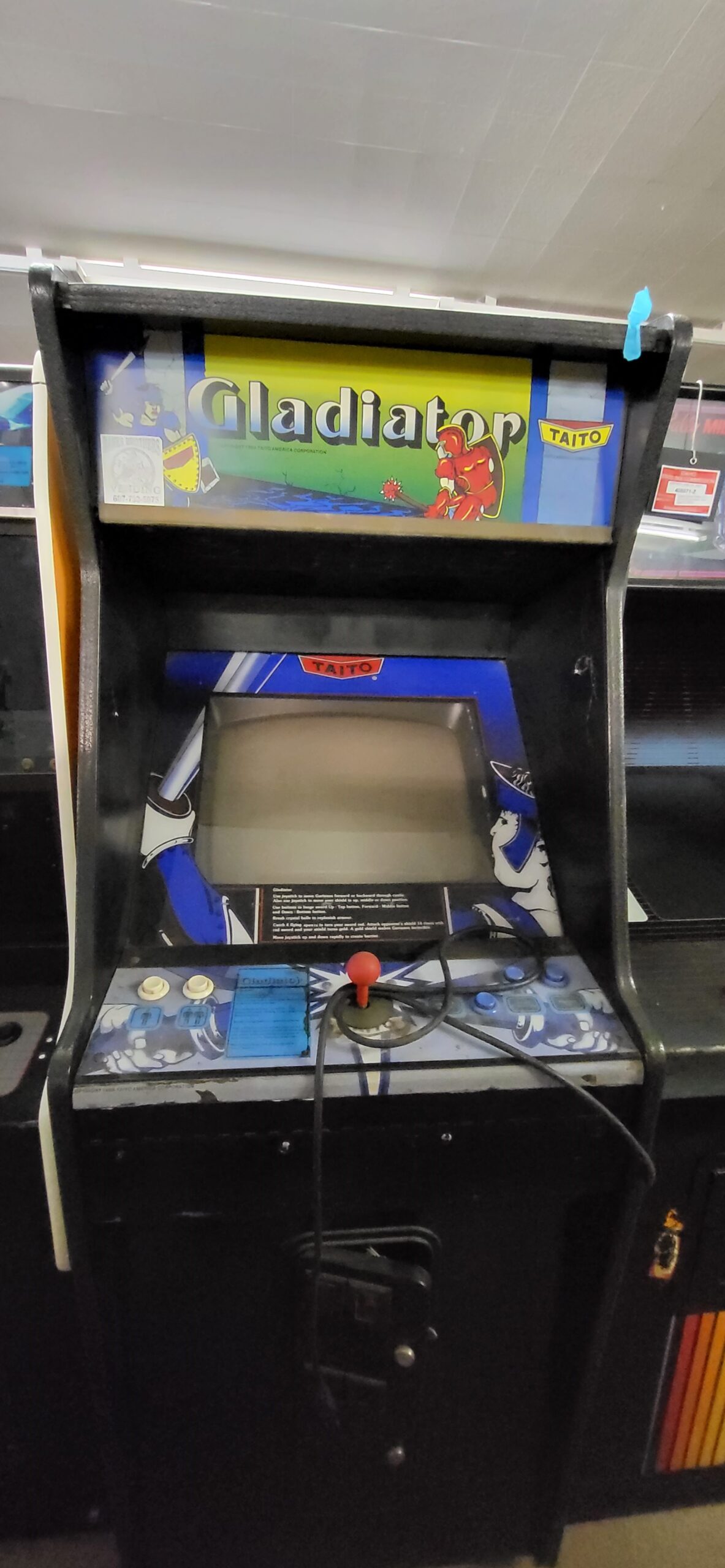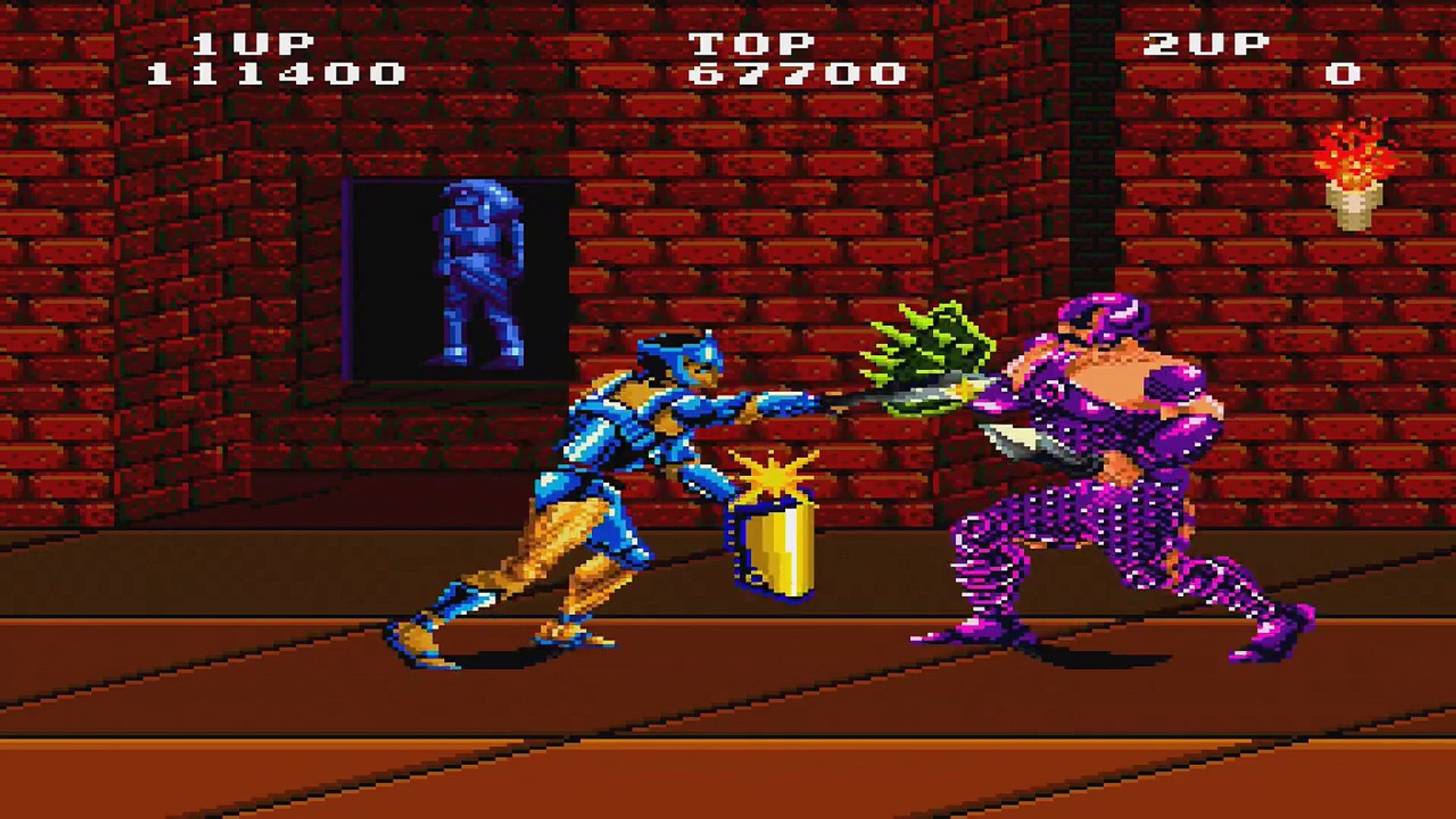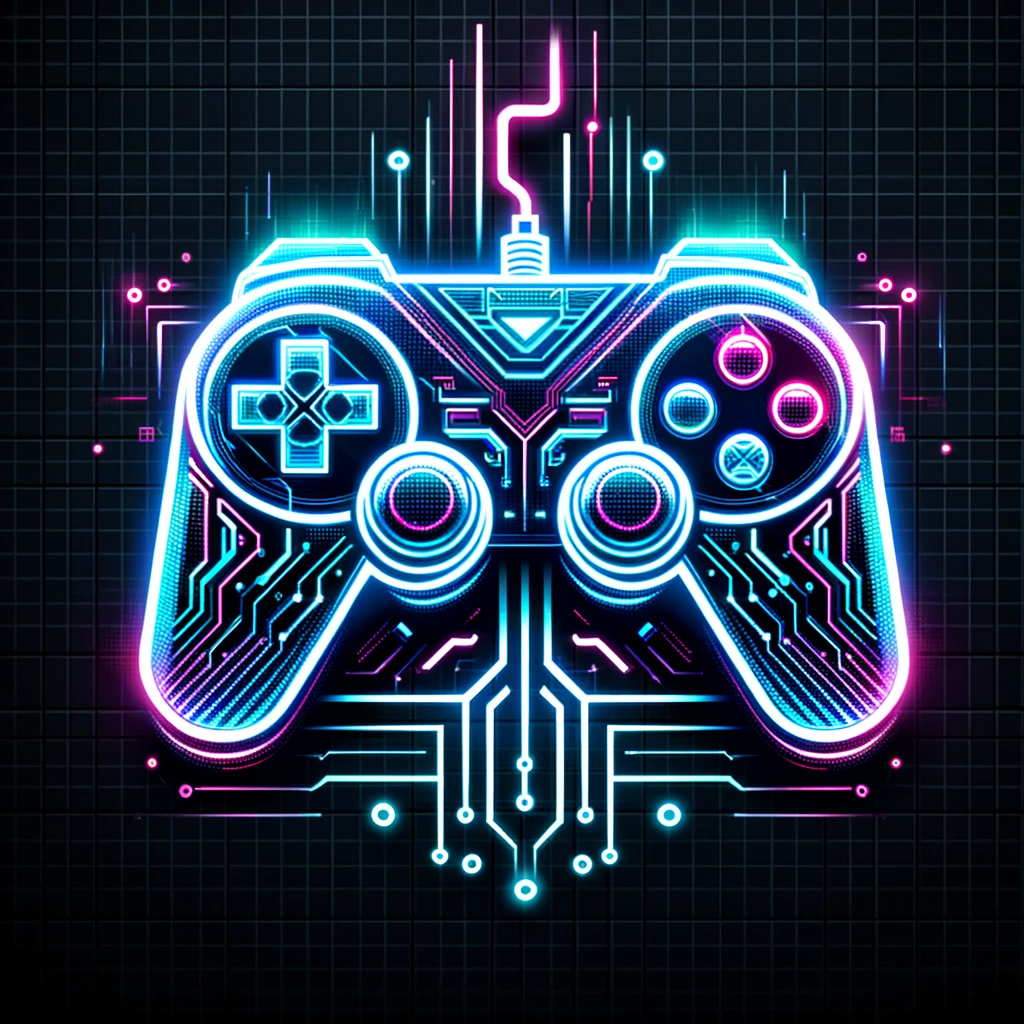
Gladiator
Arcade / Taito 1986
Gladiator is a classic arcade game developed by Taito, released in 1986. Set in a mythical Roman-themed world, the game offers players an immersive experience as they control a gladiator battling through hordes of enemies and powerful bosses. The gameplay is a side-scrolling beat ’em up, combining intense action with strategic combat maneuvers, creating an engaging and challenging gaming experience.
Taito, a renowned Japanese video game developer, introduced Gladiator in the mid-1980s. The game was developed during a period when arcade beat ’em ups were gaining popularity. Gladiator distinguished itself with its Roman setting, unique characters, and dynamic gameplay. The development team aimed to create an immersive world where players could experience the thrill of gladiatorial combat, and their efforts resulted in a game that became a staple in arcades during the 1980s.
Upon its release, Gladiator garnered positive reviews for its engaging gameplay, vibrant graphics, and challenging levels. The game’s combination of action and strategy appealed to arcade enthusiasts, contributing to its success in the gaming community. Gladiator is remembered as a classic in the beat ’em up genre and has retained its popularity among retro gaming enthusiasts.
Gladiator primarily exists in its original arcade form, but it may have been adapted to various gaming platforms over the years. The game has inspired other titles within the beat ’em up genre, influencing subsequent game developers to explore the thematic elements of gladiatorial combat.
Due to its age and classic status, Gladiator arcade cabinets are considered relatively rare. The exact number of units produced is uncertain, but its scarcity has contributed to its collector’s appeal. The value of a Gladiator arcade cabinet can vary based on its condition, rarity, and demand, with well-preserved units commanding higher prices in the retro gaming market.
Gladiator utilizes Taito’s classic arcade hardware from the mid-1980s. The hardware specs include a custom central processing unit, dedicated sound hardware, and specialized graphics processing. For those interested in repairing or maintaining the arcade cabinet, a comprehensive list of relevant parts, including the control panel, monitor, power supply, and internal wiring, is available. Resources such as online forums and retro gaming communities often provide guidance and support for arcade cabinet restoration projects.


